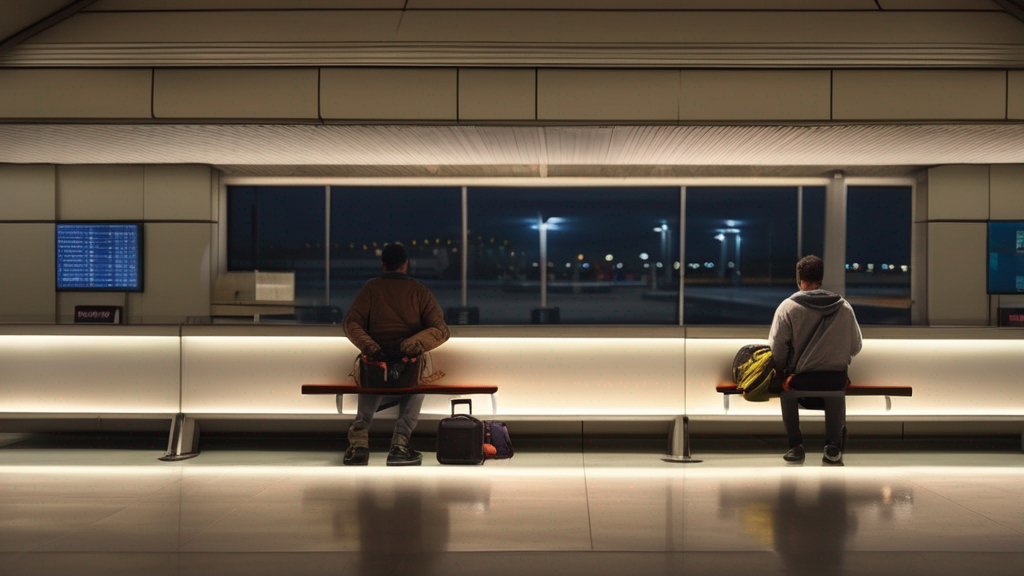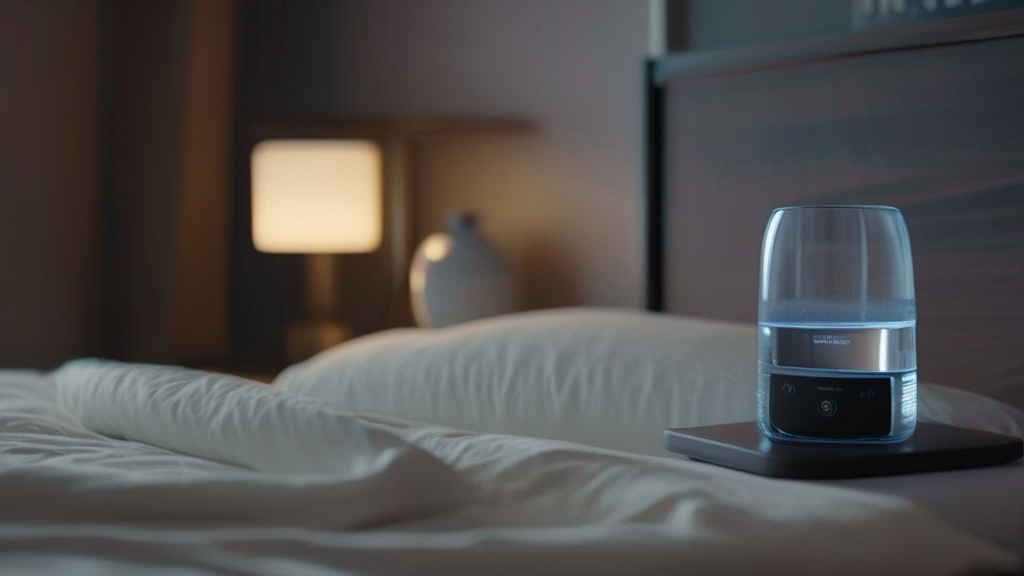When you travel, there are occasionally going to be extended overnight stops, delays, and even worse, canceled flights. Airport overnight layovers, on the other hand, take the cake for being the worst of the worst (a stop to change planes that runs overnight, with the connecting flight the next morning). If you’re a student traveling on a limited budget, a “reduced” room at the airport hotel may not be the best accommodation option for the night.
Therefore, once you’ve come to terms with the fact that you’ll be spending the night in the airport, read this quick survival guide for advice on how to make the ensuing 8–12 hours of your life more bearable.
Table of Contents
Are You Allowed to Sleep in Airports?
In the past, travelers seeking to rest before a flight would often spend the night in airports. These days, some airports, like Stansted Airport in London, are cracking down on drowsy travelers by outlawing the use of camp beds and requesting that passengers sit upright in their seats.
Uncommonly, an airport employee might confront you and urge you to book a hotel room. In that case, smile and be ready to show your flight ticket as identification that you are indeed staying at the airport for the purpose of sleeping. Make a note of how to reach the closest hotel just in case.
However, in the majority of airports, staff members from the airlines are accustomed to seeing travelers stay up all night or get a few hours of sleep before their next flight. As long as you’re not disturbing others or blocking walkways, sleeping in an airport is generally not prohibited even though it may not be encouraged.
Domestic airports and airports with limited operating hours are where you’re most likely to encounter difficulties. International airports frequently recognize the importance of sleep and provide travelers with convenient sleeping options like free lounge areas with reclined seats, airport hotels, or sleeping pods.
How to Find the Best Spot to Sleep at the Airport?
Not all airports are created equal when it comes to sleeping in them, and sleeping in airports is a little bit of a science.
Some airports have chairs without armrests so you can comfortably stretch out on them, some have carpet, others have sleeping areas specifically for travelers to use, lounges, and even rooms, but most don’t.
To find the best place to sleep in airports without a designated sleeping area, you should stroll around the terminal.
Here are some factors to take into account when picking a place to sleep.
- Safety in numbers: Try to sleep in a shared space if at all possible.
- Stay away from high traffic areas:It is difficult to fall asleep in high traffic and noisy areas such as restrooms, check-in desks, next to stores, or near food vendors. This might be less of a problem, though, if you pack some earplugs and an eye mask.
- Look for a set of chairs with no armrests:A chair without armrests makes it much simpler to spread out while also being more comfortable and hygienic than sitting on the ground.
- Look for clean carpeted areas:Consider sleeping on the floor if there aren’t any chairs available. My luggage is usually placed between me and a wall or window when I sleep close to one. This guards your bags from would-be bag thieves.
- Look for outlets:You can charge your phone or laptop at night if you can find a decent place to sleep that has outlets.
Sleep in Airports: What Should You Do?
Tips to Survive Sleeping in An Airport
You’re Stuck. Now What?
You might be able to get food vouchers from airport staff unless you missed your flight due to an untimely layover. Check the Airport Hotel Guide, a directory of hotels in or near airports, after you’ve given that a shot. Request pillows, blankets, or even a cot from airline or airport staff if there are no openings or leaving the airport is not an option. If you don’t ask, no one will provide any of this.While all of that is going on, keep an eye on sleepinginairports.net, which has advice on how to get through the night in various airports around the world.
You Can Still Get a Workout In
Want to work out but don’t have access to a treadmill or elliptical? If you want to, you can spend hours wandering the airport. Walking from terminal to terminal for however long your heart desires is enough to qualify as exercise for the day, even though it may not be a high-intensity cardio workout. especially if your backpack is overstuffed.
Search for stairs and climb and descend them for 10 to 45 minutes to burn even more calories. After five espresso shots, what else is there to do? I might have appeared a little insane to those on the escalator as I walked up and down the stairs with my backpack for an hour. Am I right?
Gear Up
Because most airport concessions close before midnight, stock up on enough food and beverages to last the entire evening. Keep the plastic bottle you purchased and fill it up at the water fountain if you don’t have a reusable bottle.
In case the cot didn’t work out, look through your luggage for any extra layers. Airports can be chilly, and extra clothing will cushion you against the floor. Utilize pants or jackets as pillows and bedding.
Wearing sunglasses will also help hide your unconsciousness. If you’re traveling with a group and aren’t concerned about theft, earplugs are also a good idea.
Protect Your Bags
If you are concerned about someone stealing your belongings, consider luggage storage. Ask your airline for the nearest one, but be aware that there isn’t much of a standard for how they are run. For instance, the one at LAX is open continuously and is housed in a separate structure. (You can get a free ride there and back from staff.) In contrast, JFK’s terminals one and four have storage units, but they’re only accessible beginning at 7 a.m. to 11 p.m. One of the busiest airports in the US is SFO., has storage in the international terminal, also open from 7 a.m. to 11 p.m. There are no storage facilities at the prone to delays LaGuardia and Chicago O’Hare.
Find Your Haven
Find a secure, cozy location close to services. In general, look for carpeted areas where you know cameras are watching, away from areas with a lot of foot traffic, or benches and seating without armrests. The adage “safety in numbers never goes out of style” applies to airport nappers. Find them and form a bond with them.
Chicago O’Hare & Midway, San Francisco, San Diego, Burlington, Dallas-Fort Worth, Albuquerque, and Raleigh-Durham are just a few of the airports in the United States that have yoga/meditation rooms and won’t mind if you choose to spend some time in them introspecting. They frequently provide free mats. Additionally, most international airports have prayer rooms, which can double as sleeping spaces. Be polite though.
Another choice might be Minute Suites. You can rent one of their HDTV-equipped sleep chambers for an hour ($38), an overnight ($130), or just for a 30-minute shower ($25) at a time. They also have desks, phones, daybeds, and Wi-Fi. Beginning in 2009, Minute Suites now offers lodging at Hartsfield-Jackson Atlanta, Philadelphia, and Dallas Forth Worth airports. The next airport on the list is Chicago O’Hare.
International travel? Munich is home to “Napcabs”, self-service sleep booths that come with Internet Access and a TV (10 Euro or $12-$13 per hour) and there are Yotel “pod” hotels in London Gatwick, Amsterdam Schiphol, and London Heathrow. In 2016 and 2018, respectively, they intend to open locations in Singapore Changi and Paris Charles de Gaulle.
If hotels or pods are not an option and you don’t like to sleep in public, Donna McSherry, the owner of sleepinginairports.net, suggests sleeping in a rental car. “If you can keep the car in the lot for free, which is usually possible at a regional airport, head over to the car rental hall to find out the cost of a rental, and then sleep in the car.”
Prepare for Bed
It is beneficial to tidy up a little before going to bed, just as you would at home, even if it is on a gross airport floor.
If you must, change into something cozy. Make sure to wash your face, remove your shoes, and brush your teeth. If you want, you can read a book or listen to some music before attempting to unwind and fall asleep. When you awake, you’ll feel better. Take off your shoes if possible, or wear comfortable shoes that you could sleep in.
Set the Alarm So You Don’t Miss Your Connecting Flight
Make sure your flight information is correct before going to bed so you will know what time to get up in order to catch your connecting flight and which gate to go to.
Set the travel clock on your phone, watch, or all three. If you don’t have an alarm, write a note in big letters “wake me up at 8:30 in the morning, so I don’t miss my flight”.
Don’t Become a Statistic
Place your credit and debit cards in your shoe or the pocket of your pants. Ask a night shift worker for advice on a good place to take a nap after becoming acquainted with them. Ask them to watch over you and your equipment in exchange for up to $20.
Will McGough, a seasoned traveler, has perfected the art of dozing off while seated. Additionally to making you appear less vulnerable, this is a useful skill to have while flying.
The Morning After
Depending on how crusty you feel the following morning, John E. DiScala, a frequent flyer who logs 150,000 miles annually, suggests purchasing a day pass to an airline club. Because lounges typically close at night, you can’t sleep there. However, a shower is a welcome sight after spending the night on the floor in some places (check Loungebuddy).
Ask for Discounts
It’s always worth a shot, even though this might not work for everyone. Some airlines will offer an airport card with discount coupons on it if you decline the “discounted” hotel room and tell them that you are staying the night in the airport, but the catch is that you have to ask. Keep your coffee, tea, or soda cup from eateries and coffee shops that offer to-go orders because they might provide free refills. (If you have a Starbucks Rewards account, high five!)
Even though an overnight layover at an airport might not be your preferred way to spend the night, it can be dealt with if you follow these advice. It’s important to remember that you CAN leave the airport during your layover, but you will have to do so once more when you get back. And on the plus side, you’ll probably be flying afterwards to a fantastic location or the convenience of your own home. The end result is a success!
Read about
- Can You Sleep With Contacts In?





